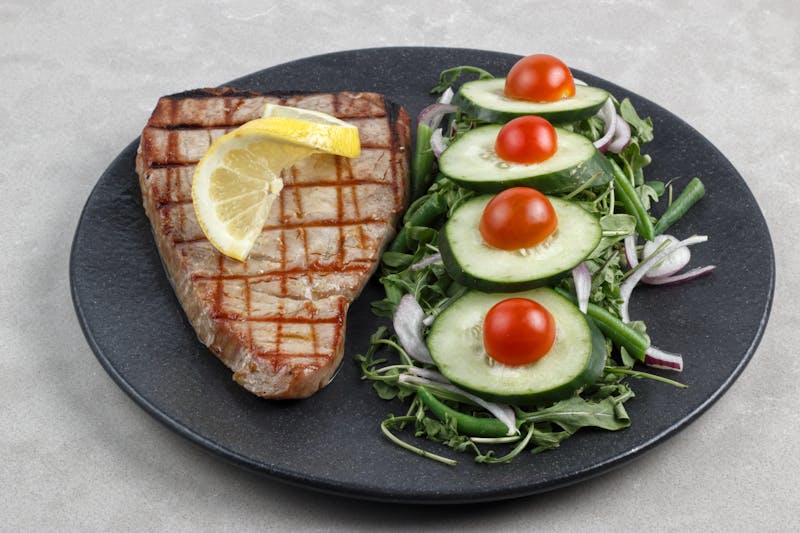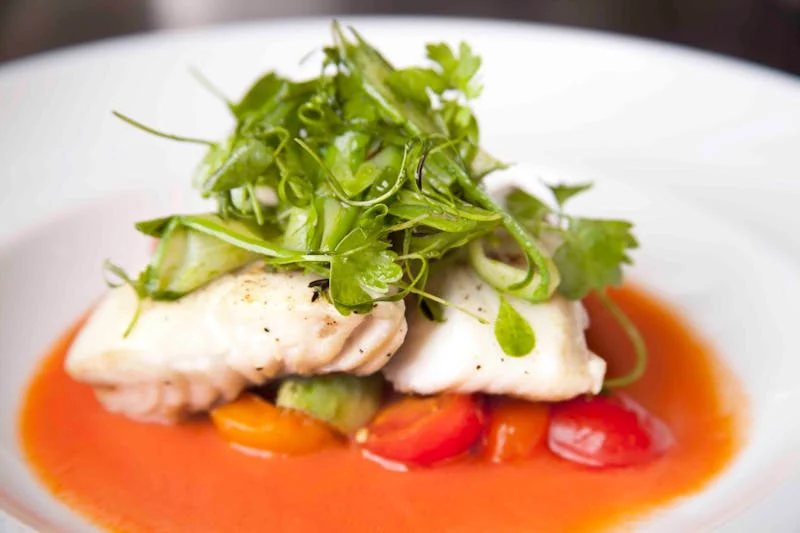Introduction
For many, the idea of going vegetarian can feel overwhelming, especially when it comes to creating meals that are both flavorful and satisfying. But fear not—vegetarian cuisine is not only delicious, it’s also full of variety and creativity. Whether you’re a long-time plant-based eater or just exploring meatless meals, the world of vegetarian cooking offers endless possibilities. In this article, we’ll dive into the benefits of a plant-based diet, essential ingredients, and mouthwatering recipes that will make your taste buds dance.
The Rise of Plant-Based Eating
How Vegetarianism is Becoming Mainstream
Over the past decade, plant-based eating has moved from the fringes to the mainstream. Thanks to a combination of health trends, environmental concerns, and the increasing availability of plant-based products, more people are turning to vegetarian diets. What was once considered niche is now part of the global culinary conversation, with restaurants and home cooks alike experimenting with new ways to enjoy vegetables, legumes, and whole grains.
Health Benefits of a Plant-Based Diet
Choosing a vegetarian lifestyle offers a wide range of health benefits. A plant-based diet is rich in nutrients such as fiber, vitamins, and minerals, which can help reduce the risk of chronic diseases like heart disease, diabetes, and certain types of cancer. Studies have shown that vegetarians tend to have lower cholesterol levels, healthier blood pressure, and a reduced risk of obesity. In addition, plant-based foods are often lower in calories, making them a great choice for weight management.
Environmental Impact of Vegetarianism
In addition to personal health, choosing a vegetarian diet can have a profound impact on the environment. The meat industry is a significant contributor to greenhouse gas emissions, deforestation, and water pollution. By opting for plant-based meals, you reduce your carbon footprint and support a more sustainable food system. Small changes in what we eat, collectively, can have a big impact on the health of our planet.
Key Ingredients in Vegetarian Cooking
Must-Have Staples for Every Plant-Based Kitchen
Vegetarian cooking revolves around fresh, wholesome ingredients. With a well-stocked pantry and fridge, you can easily whip up nutritious and delicious meals every day. Here are some essential ingredients to keep on hand:
Fresh Vegetables and Fruits
Vegetables and fruits are the foundation of vegetarian cooking. From leafy greens like spinach and kale to root vegetables like carrots and sweet potatoes, vegetables provide essential nutrients, fiber, and flavor. Fruits like berries, apples, and citrus fruits can be used in both savory and sweet dishes, adding brightness and complexity.
Legumes and Beans
Beans, lentils, chickpeas, and other legumes are powerhouses of plant-based protein and fiber. They’re perfect for adding bulk and nutrition to salads, soups, stews, and tacos. Beans are also incredibly versatile, allowing for a wide range of flavor profiles and textures.
Whole Grains and Nuts
Whole grains like quinoa, brown rice, barley, and oats are excellent sources of carbohydrates, protein, and fiber. Nuts and seeds, such as almonds, walnuts, and chia seeds, provide healthy fats, protein, and crunch. These ingredients are key for creating hearty, satisfying vegetarian meals that keep you full longer.
Plant-Based Dairy Alternatives
From almond milk to coconut yogurt, plant-based dairy alternatives have come a long way in terms of taste and texture. Many of these alternatives are fortified with vitamins and minerals, making them a great source of calcium and other nutrients. Plant-based cheese, made from nuts or soy, can easily replace traditional dairy in most recipes.
Mouthwatering Vegetarian Recipes
Sweet Potato and Black Bean Tacos
Tacos are a classic, and these sweet potato and black bean tacos are a perfect vegetarian twist on the dish. Roasted sweet potatoes are tossed with black beans, spices, and lime juice, then piled high on a warm tortilla. Top with avocado, salsa, and a sprinkle of cilantro for a fresh, flavorful meal that’s both satisfying and nutritious.
Creamy Vegan Mushroom Risotto
This creamy mushroom risotto is rich and comforting, without any dairy or meat. Arborio rice is slowly cooked in vegetable broth, absorbing all the flavors from the mushrooms, garlic, and onions. For creaminess, use coconut milk or cashew cream. It’s the perfect dish for a cozy night in or to impress dinner guests.
Chickpea Salad with Avocado and Lemon Dressing
This fresh, protein-packed salad combines chickpeas with creamy avocado, crisp cucumbers, and juicy cherry tomatoes. Tossed in a simple lemon dressing, it’s light yet filling, making it a perfect lunch or side dish. You can also add some roasted veggies or quinoa for extra texture and flavor.
Spaghetti Squash Primavera
If you’re looking for a low-carb alternative to pasta, spaghetti squash is the answer. Roasted spaghetti squash strands are mixed with sautéed veggies like bell peppers, zucchini, and cherry tomatoes, creating a colorful, veggie-packed dish. Drizzle with olive oil, garlic, and a sprinkle of nutritional yeast for a cheesy flavor without the dairy.
Vegan Buddha Bowl
A vegan Buddha bowl is a versatile dish that combines a variety of plant-based ingredients into one satisfying meal. Start with a base of quinoa or brown rice, then top with a variety of roasted vegetables, leafy greens, chickpeas, avocado, and a drizzle of tahini dressing. It’s the perfect balance of protein, fiber, and healthy fats.
Roasted Cauliflower Steaks with Tahini Sauce
Cauliflower steaks are a fantastic plant-based main dish. Roasted until golden and crispy, these cauliflower steaks are served with a rich tahini sauce for a nutty, creamy finish. Pair with a side of quinoa or a fresh salad for a complete, hearty meal.
How to Make the Most of Plant-Based Cooking
Balancing Flavors and Textures
One of the keys to successful vegetarian cooking is balancing flavors and textures. Vegetables should be cooked in a way that brings out their natural sweetness and richness. Adding spices, herbs, and dressings can enhance the flavor of plant-based dishes, while ingredients like nuts, seeds, and grains provide satisfying crunch and heartiness.
Substituting Meat in Recipes
Substituting meat in recipes is easier than you might think. Use tofu, tempeh, or seitan for a meat-like texture in stir-fries, sandwiches, or tacos. For a ground meat replacement, try lentils, mushrooms, or quinoa. These ingredients can absorb spices and seasonings, making them excellent stand-ins for traditional meats.
Common Mistakes to Avoid in Vegetarian Cooking
Relying Too Much on Processed Foods
While there are many delicious plant-based processed foods available, relying too heavily on them can lead to nutrient imbalances. Stick to whole, fresh ingredients as much as possible for the best nutritional benefits.
Not Getting Enough Protein
Vegetarians need to be mindful of getting enough protein in their diets. Fortunately, there are plenty of plant-based sources of protein, including legumes, tofu, quinoa, and nuts. Make sure to include a variety of protein-rich foods in your meals to ensure you’re meeting your nutritional needs.
Conclusion
Vegetarian cooking is all about creativity, flavor, and health. Whether you’re looking to reduce your environmental footprint, improve your health, or simply enjoy delicious food, there’s never been a better time to embrace plant-based cuisine. With these easy-to-follow recipes and tips, you’ll be able to enjoy mouthwatering vegetarian meals that satisfy your cravings and nourish your body.

FAQs
1. Can I get enough protein on a vegetarian diet? Absolutely! Many plant-based foods, such as beans, lentils, tofu, quinoa, and nuts, are excellent sources of protein.
2. Are plant-based substitutes like tofu and tempeh healthy? Yes, tofu and tempeh are both great sources of plant-based protein and are low in saturated fat. Just make sure to choose unprocessed options when possible.
3. How do I make vegetarian meals more filling? To make your meals more filling, incorporate whole grains, legumes, and healthy fats like avocado or nuts into your dishes.
4. Can I still enjoy comfort food as a vegetarian? Definitely! Vegetarian comfort food can be just as rich and satisfying as traditional meat-based dishes. Try vegetarian versions of your favorite meals, like veggie lasagna or mushroom risotto.
5. What’s the easiest way to get started with vegetarian cooking? Start simple! Pick a few easy recipes and focus on stocking your kitchen with fresh vegetables, legumes, and whole grains. You’ll be amazed at how versatile vegetarian meals can be.

